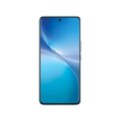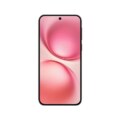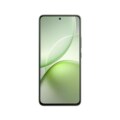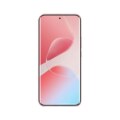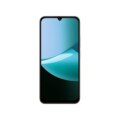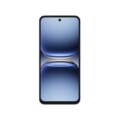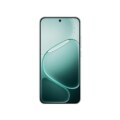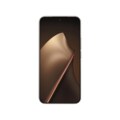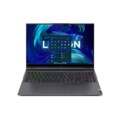Vivo Y29
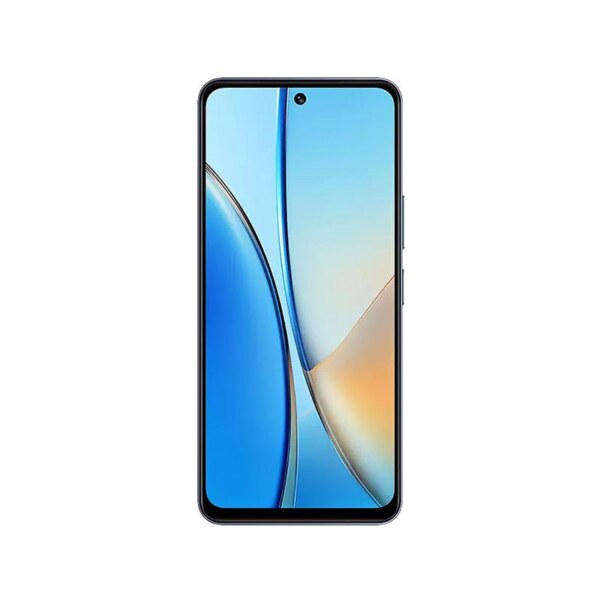

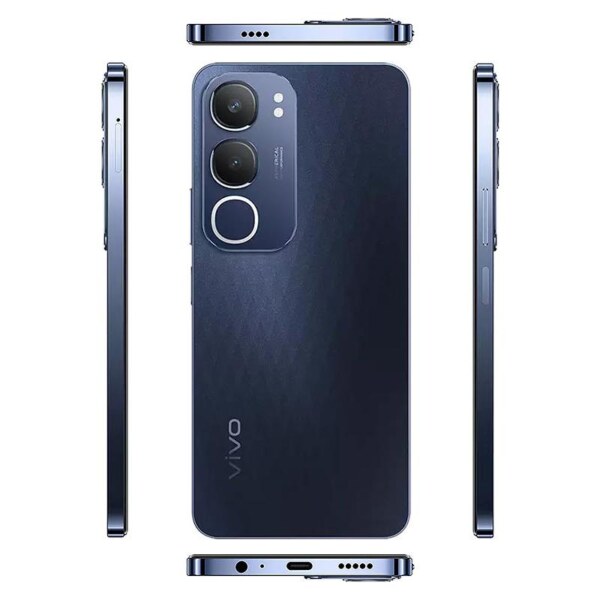
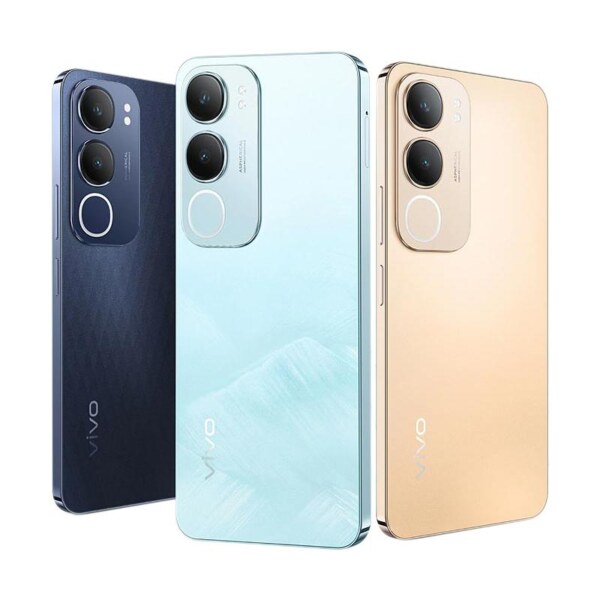
-
Chipset: Qualcomm SM6225 Snapdragon 685 (6 nm)
-
RAM: 8GB
-
Storage: 128GB
-
Display: 6.68 inches, IPS LCD, 120Hz, 1000 nits (HBM)
-
Camera: 50MP + 8MP + 2MP
-
OS: Android 15 OS
Specs
General
| Device Type | Mobile |
| Model | V2420 |
| Released | 14 May, 2025 |
| Status | Available |
| Price | 49,999 |
Design
| Type Design Type called form factor refers to a mobile phone's size, shape, and style as well as the layout and position of major components of phone. There are three major form factors seen in mobile phones => bar phones, folding phones and sliding phones. | Bar |
| Dimensions | 165.7 x 76.3 x 8.2 mm |
| Weight | 204 g |
| Colors | Noble Brown, Elegant White |
| Extra Features Extra Features in Display of mobilpehones | Glass front, plastic back, plastic frame, IP64 dust tight and water resistant (water splashes) |
Network
| 2G Network Indicates whether the mobile phone supports 2G network connectivity for basic calls and texts. |
SIM1: GSM 850 / 900 / 1800 / 1900 SIM2: GSM 850 / 900 / 1800 / 1900 |
| 3G Network Indicates whether the mobile phone supports 3G connectivity for standard internet browsing and calls. | HSDPA 850 / 900 / 2100 |
| 4G Network Indicates whether the mobile phone supports 4G connectivity for fast internet browsing and HD calls. | LTE band 1(2100), 3(1800), 5(850), 8(900), 28(700), 38(2600), 40(2300), 41(2500) |
| SIM SIM (Subscriber Identity Module) is a small card that contains mobile network subscriber's account information. This allows the phone using the card to attach to a mobile network. The SIM card is most commonly associated with GSM and UMTS mobile networks. Moving a SIM card from one phone to another allows a subscriber to switch mobile phones without having to contact their mobile network carrier. SIM cards can also be used by a phone to store limited amounts of data, such as phone numbers and text messages. | Nano SIM + Nano SIM |
| Dual SIM | Yes, Dual SIM |
Display
| Display Type Display Technology => A number of display technologies and types used in mobile phones => TFT (Thin Film Transistor), IPS (In-Place Switching), OLED (Organic Light Emitting Diode), AMOLED (Active-Matrix Organic Light-Emitting Diode), Super AMOLED (an even advanced version of AMOLED), Resistive Touchscreen (Resistive touchscreens contain two layer of conductive material with a very small gap between them which acts as a resistance), Capacitive Touchsceen (Capacitive touchscreen technology consists of a layer of glass coated with a transparent conductor) | IPS LCD Capacitive Touchscreen, Multitouch |
| Size | 6.68 Inches |
| Resolution | 720 x 1608 Pixels |
| Display Colors Display Colors is refers to the number of different shades of colors that the screen is capable of displaying => 64K colors, 256K colors and 16 million colors, Obviously 16M is highest available range of colors and better than others. | 16M Colors |
| Pixel Density Pixel Density (PPI) is refers to the concentration of pixels on a particular display, measured in pixels per inch (ppi). Pixel density is calculated by dividing the diagonal pixel resolution of a display by its diagonal size, higher pixel density better display quality. | (~264 PPI) |
| Display Protection Display Protection => Gorilla Glass is a special alkali-aluminosilicate glass shield with exceptional damage resistance that helps protect mobile displays from scratches, drops, and bumps of everyday use, It is always better to go for a smartphone with Gorilla Glass for that added protection and peace of mind. | Schott Glass |
| Features | 120Hz, 1000 nits (HBM) |
Media
| Audio Playback Specifies whether the mobile phone can play audio files like music and voice recordings. | 24-bit/192kHz Hi-Res audio |
| Loudspeaker | Yes, with dual speakers |
| 3.5mm jack Is it have 3.5mm headphone jack or not. | Yes |
Camera
| Primary Camera is able to capture photographs and usually videos, The most important characteristics of a camera are the resolution (measured in megapixels), lens focus type (fixed or automatic), higher megapixel cameras are known to capture higher quality photos, but not always a good measurement of the photos quality. | 50 MP, f/1.8, (wide), PDAF + 2 MP, f/2.4, (depth), Ring-LED flash |
| Video | 1080p@30fps |
| Camera Features | Panorama |
| Flash Flash Light => There is commonly two types of flash lights are used in camera mobile phones, LED Flash (LED flash offers lower power consumption with drive circuitry that takes up very little room, LEDs can be strobed faster than any other light source), Xenon Flash (xenon flash produces an extremely intense full-spectrum white light for a very short duration) | Ring-LED flash |
| Secondary | 8 MP, f/2.0, (wide), Video (1080p@30fps) |
Software
| Operating System OS => Every computer system run on a base software called Operating System (OS). Operating System controls all basic operations of the computer (such as smartphone, PDAs, tablet computers and other handheld devices). The Operating System allows the user to install and run third party applications (apps), apps are used to add new functionality to the device. | Android 15 OS |
| User Interface UI or user interface of a device is the look and feel of the on-screen menu system. How it works, its color scheme, how it responds to button presses, all of these things are part of the user interface. | Funtouch OS 15 |
Hardware
| Chipset Chipset is a group of integrated circuits designed to perform one or a more dedicated functions, often with real time computing constraints, Popular smartphones are equipped with more advanced embedded chipsets that can do many different tasks depending on their programming. | Qualcomm SM6225 Snapdragon 685 (6 nm) |
| CPU CPU (Central Processing Unit) mostly known as processors, CPU processes instructions in order to carry out certain functions that make your device operate properly. Processors are often described as the brain of computers, smartphones and tablets, Smartphones and tablets rely on processors to carry out their every task, Processors are an incredibly important factor in selecting any type of computing device, including your smartphone. | Octa-core (4 x 2.8 GHz Cortex-A73 + 4 x 1.9 GHz Cortex-A53) |
| GPU GPU | Adreno 610 |
| RAM (Memory) RAM (Random Access Memory) is a type of computer memory that can be accessed randomly, any byte of memory can be accessed without touching the preceding bytes that allows information to be stored and accessed quickly from random locations. RAM is the most common type of memory found in computer systems, smartphones, tablets and other electronic devices. | 8GB |
| Internal Storage Internal Storage is a data storage space (flash memory) mostly used in smartphones, tablets and other electronic devices where operating system, apps, music, photos, videos, files and other user data Is stored. | 128GB |
| Card Slot Memory Card Slot is a special slot for inserting a memory card. Memory cards allow you to expand the phone's built-in memory, A memory card (sometimes called a flash memory card or a storage card) is a small storage medium used to store data such as text, pictures, audio, and video, for use on small, portable or remote computing devices such as mobile phones, mp3 players, digital cameras. | microSDXC (uses shared SIM slot) |
| Fingerprint fingerprint | Side-Mounted |
| Sensors Sensors are electronic components that detects and responds to some type of input from the physical environment. The specific input could be light, heat, motion, moisture, pressure and location, The output is generally a signal that is converted to use in computing systems, a location sensor, such as a GPS receiver is able to detect current location of your electronic device. | Accelerometer, Compass, Proximity, Circle to Search |
Connectivity
| Bluetooth Bluetooth is a wireless communications technology for exchanging data between mobile phones, headsets, computers and other network devices over short distances without wires, Bluetooth technology was primarily designed to support simple wireless networking of personal consumer devices. | v5.0 with A2DP, LE |
| Infrared Infrared connectivity is an old wireless technology used to connect two electronic devices. It uses a beam of infrared light to transmit information and so requires direct line of sight and operates only at close range. | |
| Wi-fi Wi-Fi is a popular wireless networking technology using radio waves to provide high-speed network connections that allows devices to communicate without cords or cables, Wi-Fi is increasingly becoming the preferred mode of internet connectivity all over the world. | Wi-Fi 802.11 a/b/g/n/ac, dual-band |
| USB | USB Type-C 2.0, OTG |
| GPS GPS The Global Positioning System is a satellite-based radio navigation system, GPS permits users to determine their position, velocity and the time 24 hours a day, in all weather, anywhere in the world, In order to locate your position, your device or GPS receiver must have a clear view of the sky. | Yes + AGPS, GLONASS, BDS, GALILEO |
| NFC NFC (Near field communication) is a set of standards for smartphones and similar devices to establish peer-to-peer radio communications with each other by touching them together or bringing them into proximity, usually no more than a few inches. |
Data
| GPRS GPRS (General Packet Radio Service) is a packet oriented mobile data service on the 2G and 3G cellular communication system's global system for mobile communications (GSM), Generally, GPRS is used for the purpose of wireless data transfer, such as sharing pictures and videos or browsing the Internet via a mobile phone connection. | |
| EDGE EDGE (Enhanced Data GSM Environment) is a wireless network technology generally considered the next step in the 2G network offers data transfer rates up to four times faster than ordinary GSM networks, Generally, EDGE is used for the purpose of wireless data transfer, such as sharing pictures and videos or browsing the Internet via a mobile phone connection. | |
| Speed | 2G GSM, 3G HSPA, 4G LTE |
| Web Browser Web Browser => a web browser is a software application used to locate, retrieve and display content on the World Wide Web, including Web pages, images, video and other files, The primary function of a web browser is to render HTML, the code used to design or markup webpages. | HTML5 |
Messaging
| SMS SMS (Short Messaging Service) is a text messaging service component of phone, Web, or mobile communication systems. It uses standardized communications protocols to allow mobile phone devices to exchange short text messages over the networks. | Yes |
| MMS MMS (Multimedia Messaging Service) is a standard way to send messages that include multimedia content (audio clips, video clips and images) to and from mobile phones over wireless networks using the WAP protocol. | Yes |
| Email Email (Electronic Mail) is a system for receiving, sending, and storing electronic messages, Similar to a letter, email is text messages that may contain files, images, or other attachments sent via the internet to a recipient by using applications and software prograps. An email address is required to receive email, and that address is unique to the user. | Yes |
Battery
| Battery Type Battery Type => Cell phones run on various kinds of batteries depending on the manufacturer, phone size or shape and features. There are basically four types of cell phone batteries => Lithium Polymer, Lithium Ion, Nickel Metal Hydride and Nickel Cadmium. | Li-Ion (Lithium Ion) |
| Capacity Battery Capacity is a measure (typically in Amp-hr) of the charge stored by the battery, and is determined by the mass of active material contained in the battery. The battery capacity represents the maximum amount of energy that can be extracted from the battery under certain conditions. | 6500 mAh |
| Fast Charging Is the device support fast charging. | 44W wired, 50% in 41 min, 100% in 92 min, Reverse wired |
Vivo Y29 Review: Big Battery, Beautiful Look But Limited Specs
Vivo has launched another mid-range phone in Pakistan the Vivo Y29. This phone comes in two variants: 8GB RAM with 128GB storage for Rs. 49,999 and 8GB RAM with 256GB storage for Rs. 54,999. Right now, the Rs. 50,000-55,000 range is full of tough competition, so let’s see where the Y29 stands.
The main selling point of the Vivo Y29 is its massive 6,500 mAh battery, which easily makes it one of the biggest in this range. Add to that the 44W fast charging, and you get solid battery backup that can last for days with normal use. If battery life is your top priority, this phone is built for you.
The second highlight is its design. Vivo phones are always good-looking and the Y29 is no different. The white marble pattern with a glossy back and shiny chrome edges looks premium, even though the body is made of plastic. You also get an IP64 splash resistance, Scott Glass protection on the display, and a special ‘Anti-Drop Armor Design’ with cushioning inside the frame. So, it looks stylish and feels durable.
The camera setup is basic: a 50MP main camera with a 2MP depth sensor at the back and an 8MP selfie camera at the front. This means you get entry-level photography performance. Videos max out at 1080p 30fps for both front and back cameras so don’t expect flagship-level results.
When it comes to display, you get a big 6.68-inch IPS LCD with 120Hz refresh rate and 720p resolution. It’s bright enough at 1000 nits, but for this price, many phones now offer AMOLED displays with Full HD resolution. Still, the low resolution helps save battery life, so that’s a plus.
Inside, the phone runs on a Snapdragon 685 chipset with 6nm architecture, paired with Adreno 610 GPU. You’ll get smooth daily usage for calls, social media, YouTube, and casual games. But for heavy gaming or demanding apps, this processor will struggle.
The software is Android 15 with Funtouch OS 15, which is close to stock Android clean, simple, and light on bloatware. There’s no built-in call recording though, since the dialer is by Google.
One of the good things is the dual speakers they give decent loudness and balanced audio for watching videos. The fingerprint sensor is side-mounted in the power button, which works fine but isn’t the fastest around.
In short, the Vivo Y29’s main power is its massive battery life and its nice looks. But apart from that, most specs like display, processor, and cameras are basic the same as what you find in phones costing Rs. 25,000-30,000. So, if you want best battery backup, the Vivo Y29 is worth considering. But if you want better cameras, AMOLED display, and stronger performance, there are better options for Rs. 50,000-55,000.
What do you think of this phone? Would you buy it for its battery life alone? Let us know your thoughts in the comments!
Reviews
Disclaimer Note
You can write your own disclaimer from APS Settings -> General -> Disclaimer Note.

